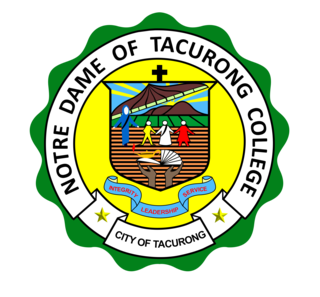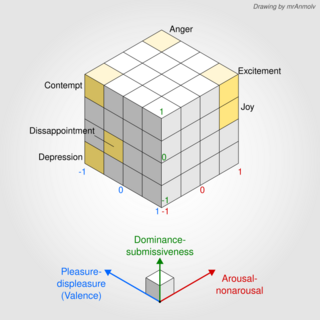E-commerce is the activity of electronically buying or selling products on online services or over the Internet. E-commerce draws on technologies such as mobile commerce, electronic funds transfer, supply chain management, Internet marketing, online transaction processing, electronic data interchange (EDI), inventory management systems, and automated data collection systems. E-commerce is the largest sector of the electronics industry and is in turn driven by the technological advances of the semiconductor industry.

Surveillance is the monitoring of behavior, many activities, or information for the purpose of information gathering, influencing, managing or directing. This can include observation from a distance by means of electronic equipment, such as closed-circuit television (CCTV), or interception of electronically transmitted information like Internet traffic. It can also include simple technical methods, such as human intelligence gathering and postal interception.
Computer and network surveillance is the monitoring of computer activity and data stored locally on a computer or data being transferred over computer networks such as the Internet. This monitoring is often carried out covertly and may be completed by governments, corporations, criminal organizations, or individuals. It may or may not be legal and may or may not require authorization from a court or other independent government agencies. Computer and network surveillance programs are widespread today and almost all Internet traffic can be monitored.

The University of Notre Dame du Lac, known simply as Notre Dame, is a private Catholic research university in Notre Dame, Indiana, north of the city of South Bend. French priest Edward Sorin founded the school in 1842. The main campus covers 1,261 acres in a suburban setting and contains landmarks such as the Golden Dome, the Word of Life mural, Notre Dame Stadium, and the Basilica. Originally for men, the university started accepting undergraduate women in 1972.
Electronic business is any kind of business or commercial transaction that includes sharing information across the internet. Commerce constitutes the exchange of products and services between businesses, groups, and individuals and can be seen as one of the essential activities of any business.

École de technologie supérieure (ÉTS), founded in 1974, is a public research university in Montreal, Quebec, Canada and affiliated to the Université du Québec system.
The suffix -ess appended to English words makes a female form of the word.
The Communications Assistance for Law Enforcement Act (CALEA), also known as the "Digital Telephony Act," is a United States wiretapping law passed in 1994, during the presidency of Bill Clinton.

A facial recognition system is a technology potentially capable of matching a human face from a digital image or a video frame against a database of faces. Such a system is typically employed to authenticate users through ID verification services, and works by pinpointing and measuring facial features from a given image.
Center for Democracy & Technology (CDT) is a Washington, D.C.–based 501(c)(3) nonprofit organisation that advocates for digital rights and freedom of expression. CDT seeks to promote legislation that enables individuals to use the internet for purposes of well-intent, while at the same time reducing its potential for harm. It advocates for transparency, accountability, and limiting the collection of personal information.

Notre Dame Stadium is an outdoor football stadium in Notre Dame, Indiana, the home field of the University of Notre Dame Fighting Irish football team.

ESS Technology Incorporated is a private manufacturer of computer multimedia products, Audio DACs and ADCs based in Fremont, California with R&D centers in Kelowna, BC, Canada and Beijing, China. It was founded by Forrest Mozer in 1983. Robert L. Blair is the CEO and President of the company.

Notre Dame of Tacurong College is a private, Catholic basic and higher education institution run by the Archdiocese of Cotabato in the City of Tacurong, Sultan Kudarat, Philippines. It was established by the Oblates in 1950. It offers Elementary, Junior High School, Senior High School, and College to the neighboring municipalities, cities, and provinces. It has been a member of the Notre Dame Educational Association, a group of schools named Notre Dame in the Philippines under the patronage of the Blessed Virgin Mary.
America's Next Producer is a 2007 reality show in which ten contestants competed for the title of America's Next Producer, as part of which they received TV Guide Network deal, office space in Hollywood, 17" MacBook Pro, 23" monitor, Final Cut Studio video editing software, and $100,000. Each week they were challenged to produce a certain genre within a certain amount of time with what they are given, with one contestant eliminated each week until a winner was chosen.

The PAD emotional state model is a psychological model developed by Albert Mehrabian and James A. Russell to describe and measure emotional states. PAD uses three numerical dimensions, Pleasure, Arousal and Dominance to represent all emotions. Its initial use was in a theory of environmental psychology, the core idea being that physical environments influence people through their emotional impact. It was subsequently used by Peter Lang and colleagues to propose a physiological theory of emotion. It was also used by James A. Russell to develop a theory of emotional episodes. The PA part of PAD was developed into a circumplex model of emotion experience, and those two dimensions were termed "core affect". The D part of PAD was re-conceptualized as part of the appraisal process in an emotional episode. A more fully developed version of this approach is termed the psychological construction theory of emotion.
The 'Engineering, Science & Technology Entrepreneurship Excellence Masters Program' also known as the 'ESTEEM Program' is an entrepreneurship master's program and collaborative effort between the Mendoza College of Business, College of Science, and College of Engineering at the University of Notre Dame. The 1-year program includes business courses covering finance, marketing, strategy, leadership, project management, quality, operations research, and ethics as well as science and/or engineering electives and a capstone thesis project.

Notre Dame University Bangladesh or NDUB is a private Catholic research university in Bangladesh. Located in Motijheel, Dhaka, the university was founded by the Congregation of Holy Cross in 2013. After receiving approval from the Ministry of Education, the People’s Republic of Bangladesh, and University Grants Commission (UGC), Notre Dame University Bangladesh commenced its academic activities in the fall of 2014.
Artificial empathy or computational empathy is the development of AI systems—such as companion robots or virtual agents—that can detect emotions and respond to them in an empathic way.

Bond Hall is a building on the campus of the University of Notre Dame which hosts student learning initiatives and a number of institutes including the Graduate School. It was originally built in 1917 as the Lemmonier Library and it housed the Notre Dame School of Architecture from 1964 to 2019. The architect was Edward Lippincott Tilton, a neoclassical architect who specialized in libraries. Its front steps are famous as the location of the Notre Dame Marching Band performances before the football games.

Hancock is a C-based programming language, first developed by researchers at AT&T Labs in 1998, to analyze data streams. The language was intended by its creators to improve the efficiency and scale of data mining. Hancock works by creating profiles of individuals, utilizing data to provide behavioral and social network information.










